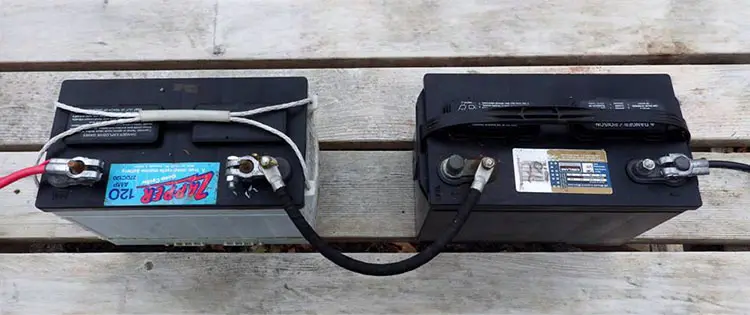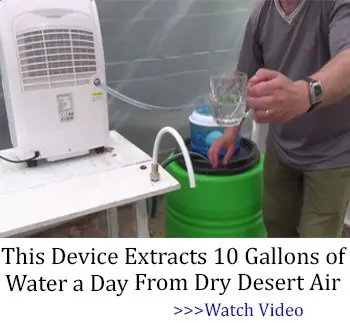Power outages are all too common, and many people find themselves unprepared when the lights go out. If you planned ahead, you might have a generator. Another option is to turn a car battery in a power bank, giving you a portable and reliable energy source. You could also use solar panels linked to a solar generator or batteries.
But if you are caught by surprise you still have some options.
One of those options is using a car battery as a power bank. In fact, you can join multiple car batteries in parallel or in a series to boost the available power. However, there is one additional piece of equipment that’s worth buying and always having on hand: an AC power inverter.
How to Turn a Car Battery in a Power Bank for Emergencies
Car batteries are typically defined as lead-acid batteries. A mixture of sulfuric acid and distilled water is held in a thick plastic case. Inside, there are lead plates hanging in the acid solution.
The dilution makes negatively charged sulfate ions and positively charged hydrogen ions. These ions interact with the lead plates. This interaction creates and holds an electric charge, which you can use when you turn a car battery in a power bank.
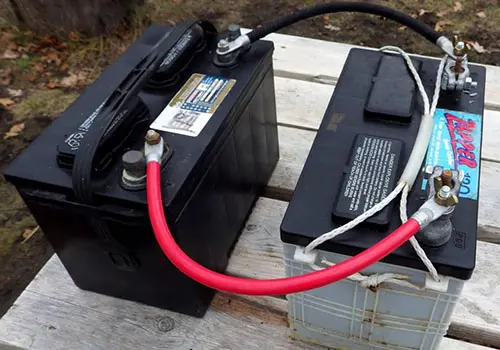
But Be Careful Out There
Even diluted sulfuric acid is dangerous. Whenever working with a car battery it’s wise to wear leather gloves, a long-sleeved shirt and goggles or other protective eyewear.
Car batteries also require regular maintenance to some degree. This usually involves removing the caps on the top of the battery to check the fluid level. If the tops of the lead plates are showing, add more distilled water. Rainwater also works in a pinch.
Most batteries have a line showing the ideal fluid level inside the battery. Fill the battery to that line. In some cases, you might need to add more sulfuric acid.
You can measure the acidity with a hydrometer. You’re typically looking for a 40% dilution.
Always, always, always add acid to water. Never add water to acid. It will cause the water to vaporize in a flash and splash of water and acid.
While maintaining car batteries requires care, there’s an easier way to solve your electricity problems. I recently discovered a brilliant solution that might surprise you. This could be your key to 24/7 power. It’s completely safe to build and use, and if you follow the instructions, there’s no risk of shock or any other hazard. It’s an impressive way to stay powered up, even when the grid goes down.
AC Inverter 101: How to Turn a Car Battery in a Power Bank
Car batteries create 12 volts of power. Some go as high as 24 volts and some as low as 1.5 volts. What’s most important to understand is that a car battery runs on something called direct current or DC.
It can power LED lights and recharge cell phones and computers. However, 12 volts of DC cannot power a lightbulb or any other appliance you usually plug into a wall.
The power we get from our electrical outlets in the house runs at 110 volts with an alternating current or AC. If you want to use a conventional light or appliance that you would plug into a wall, you’ll need an AC converter to convert the DC to AC.
They’re relatively inexpensive and if you’re stocking up or preparing supplies for anything, it’s wise to have at least one AC converter on hand. And you definitely need to learn how to draw electricity from dead batteries.
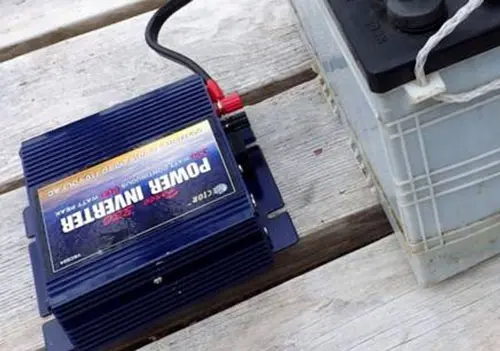
To Pull the Battery or Not
It seems like we’re encouraging you to pull the car battery out of your car. You might want to think twice about that, especially if you have no way to recharge it. All cars have alternators that recharge the battery and if you have a full tank of gas, just leave the battery in the car and attach the AC converter.
AC runs fine on an extension cord for anything you need to power, and when the battery runs low, just start the car and recharge it. Just make sure you restart the car before the battery dies.
Leaving the battery in the car also makes your emergency power portable. If you need power at a remote location, your car battery and your AC converter can solve the problem.
Turn a Car Battery in a Power Bank by Combining Batteries
If you decide to pull the battery from the car, you’re going to have a limited amount of power over time. However, turning a car battery in a power bank by combining batteries can not only boost the power but extend the life of the power provided.
Some people actually collect old car batteries. They usually need to be cleaned with a mix of sulfuric acid and distilled water. Many also need a scrub with a wire brush and a mix of baking soda and water to clean the terminals.
When the power is still on, you can recharge the batteries with a battery recharger or place them in a vehicle and let the alternator do its job. But now things get a little complicated.
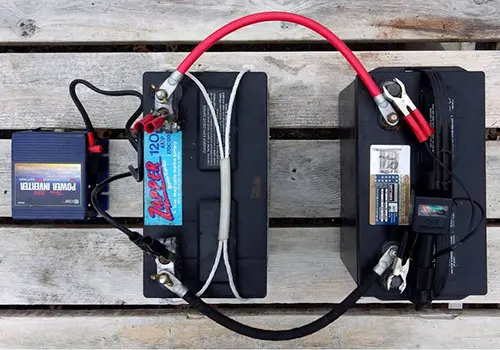
Batteries in Parallel or In Series
If you’re going to combine two or more batteries you need to make one of two fundamental decisions. Do you want to combine them in parallel or in a series?
Both approaches increase the power and the length of time that power will be available, but you have to do this the right way.

The problem and the challenge with combining batteries in a series is that it boosts the power from 12 volts to 24 and if you add a third battery to 36 and so on. The better solution is to combine batteries in parallel. This simply maintains a consistent delivery of 12 volts but over a longer period of time.
Combining batteries also assumes you have more than one. Some people keep old batteries and recondition them and store them in that remote corner in the garage.
Others actually go to junk yards to salvage and recondition old batteries. That’s a lot of work and it’s fair to assume they also have generators and solar panels. But let’s just say you have two or more car batteries available.
Turn a Car Battery in a Power Bank: Boost Your Power Supply with Parallel Connections
If you have two or more car batteries, you can easily set them up in parallel to turn a car battery in a power bank. This method keeps the output voltage steady at 12 volts and increases the battery capacity, allowing you to run your devices longer without needing to charge the battery.
To connect the batteries in parallel, link the positive terminals together and do the same with the negative terminals. This creates a single power source that delivers more current while maintaining the same voltage
It’s crucial to ensure the batteries are of the same type and age, such as lead acid batteries or lithium-ion batteries, to avoid uneven charging or discharging. This can prevent issues like a dead battery or reduced battery life.
Related: How to Survive a Winter Power Outage
Once your batteries are fully charged and connected, you can use them for various devices, from lights to small appliances. For example, in a solar setup, these batteries can store energy generated during the day for nighttime use. This setup is ideal for off-grid living or power outages. Additionally, the combined power can even help start a car or act as a jump starter for a laptop battery or other electronics.
Remember to regularly monitor the batteries. Check their charge levels and maintain them properly to extend their lifespan.
Inspect for corrosion on the terminals, ensure the connections are tight, and use a reliable battery charger to keep everything in good working condition. Including a charging circuit or protection circuit can further safeguard your setup against overcharging or short circuits.
With proper setup and maintenance, you can enjoy a reliable power source for your needs, whether it’s for daily use or emergencies like a jump start.
Have you tried this project? How did it work for you? Do you have any other recommendations? Share your thoughts in the comments below!
Modular Backyard Power Plant Review
How to Still Have Power When the Grid Is Down (Video)
Ingenious Projects for Endless Hot Water Without Electricity

